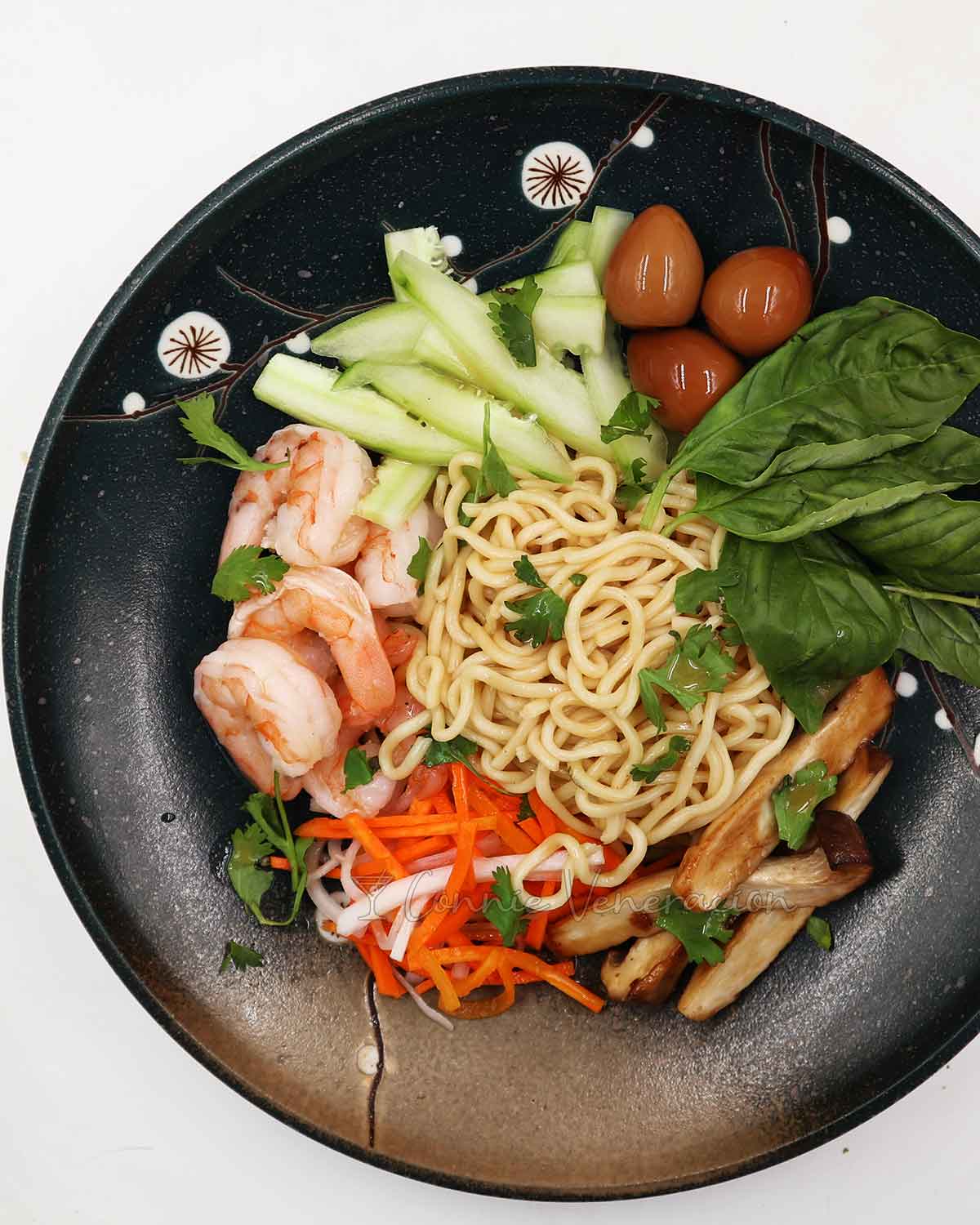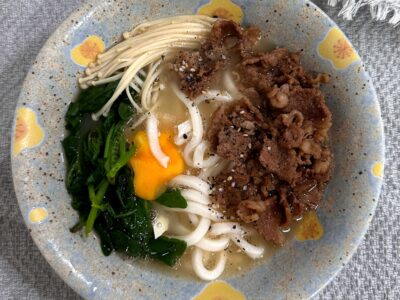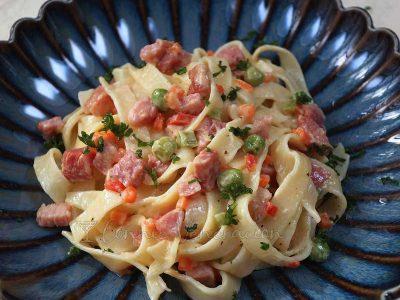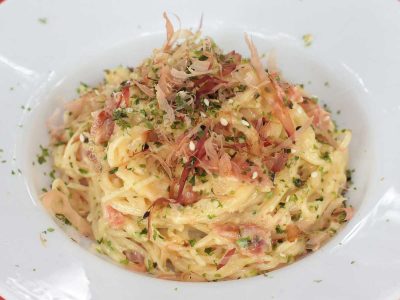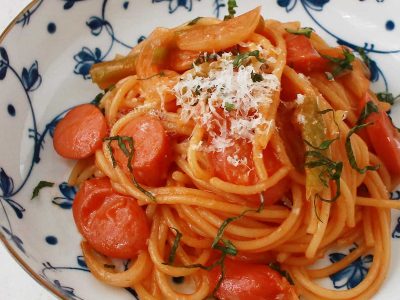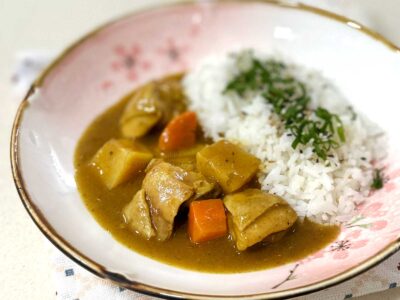You may use rice noodles or egg noodles instead of ramen. Whatever noodles you choose, remember that, after blanching, it is essential to thoroughly drain then dump them in a bowl of iced water. Keep them soaked in the icy bath until cold before draining again. That’s how you keep the noodles from sticking together.
And the mushrooms? Do they have to be eryngii? Well, mushrooms that stay firm after cooking are ideal for this dish. That’s why we used eryngii. Shiitake will make a good substitute. More delicate varieties like oyster mushroom will neither stay firm nor keep its shape during pan-frying. If you’re okay with that, then, go ahead and use oyster mushrooms.
The pickled vegetables and soy sauce eggs were prepared ahead of time. They had been soaking in the fridge for a couple of days before we had this sweet tangy cold noodles for lunch.
Asian cold noodle salad
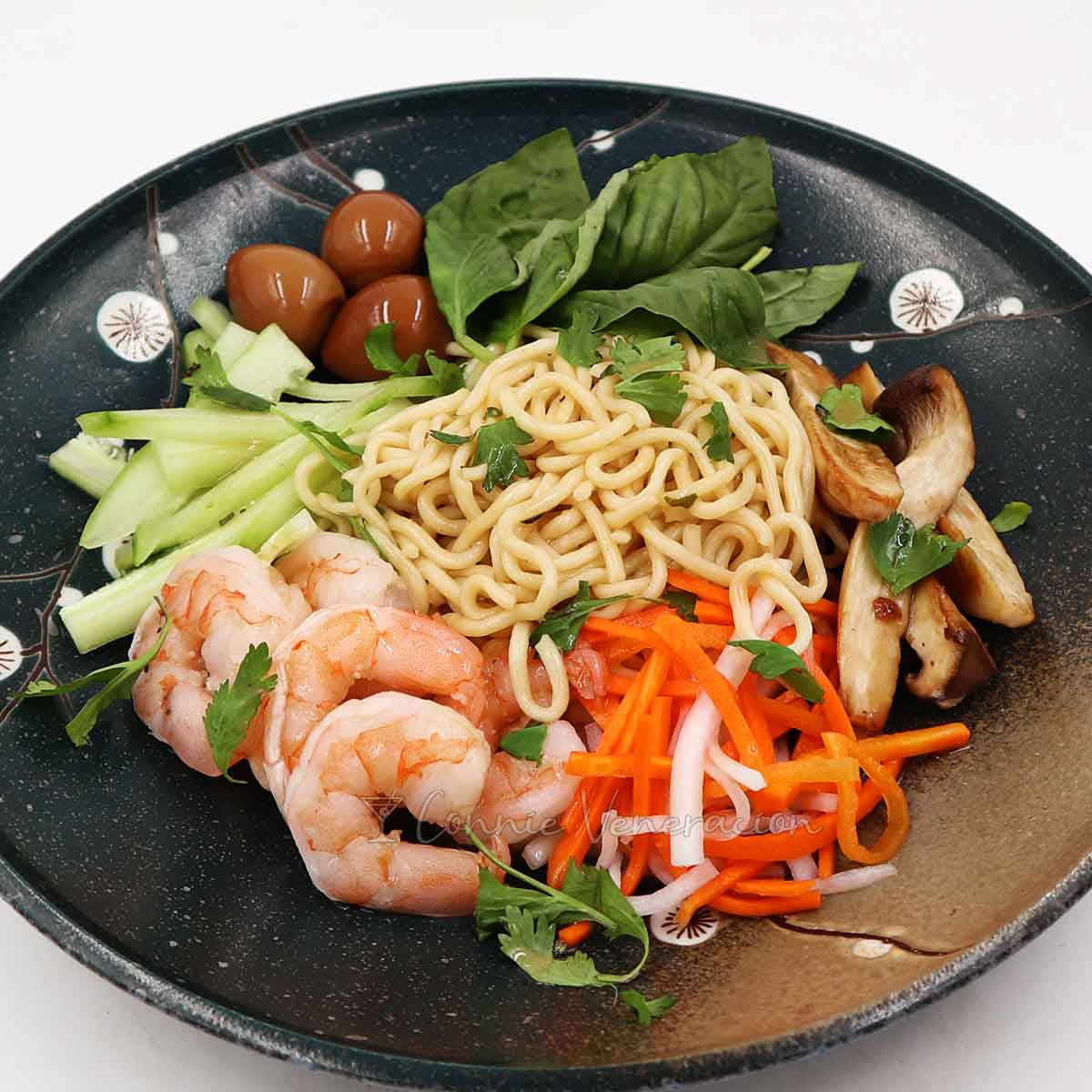
Ingredients
For the pickled carrot and radish
- 1 carrot peeled and julienned
- 1 white radish (daikon) peeled and julienned
- ¼ cup white sugar
- 1 tablespoon salt
- ¾ cup rice vinegar
For the soy sauce eggs
- 12 quail eggs boiled and peeled
- ½ cup light soy sauce (we use Kikkoman)
- 2 tablespoons mirin
- 2 tablespoons rice vinegar
For the mixed fish sauce
- ¼ cup fish sauce
- ¼ cup calamansi juice or lime or lemon juice
- ¼ cup white sugar
- 4 pinches chopped bird's eye chilies
- 4 pinches minced garlic
To complete the dish
- 2 eryngii mushrooms
- 2 tablespoons sesame seed oil
- 12 large shrimps peeled and deveined
- ramen (enough for four people)
- 1 cucumber julienned
- Thai basil to garnish
- cilantro to garnish
Instructions
Pickle the carrot and radish
- Pack the julienned carrot and radish into a jar.
- Boil the sugar and salt with 1/4 cup water until dissolved.
- Cool the boiled mixture and stir in the rice vinegar. This is your pickling solution.
- Pour the pickling solution into the jar with the carrot and radish. Cover tightly. Keep in the fridge at least overnight.
Make the soy sauce quail eggs
- Place the peeled quail eggs in a jar.
- Mix together the soy sauce, mirin and rice vinegar with 1/2 cup water.
- Pour the soy sauce mixture into the jar with the quail eggs. Cover tightly and keep overnight in the fridge.
Make the mixed fish sauce
- Stir together all the ingredients until the sugar is dissolved.
- Cover loosely and set aside to allow the flavors to develop.
Complete the dish
- Cut the mushrooms into "fingers".
- Heat the sesame seed oil lightly in a frying pan.
- Fry the mushrooms just until lightly browned. Cool.
- Boil water in a large pot.
- Drop in the cleaned shrimps and cook for one minute. Scoop out, drain on paper towels and cool.
- Allow the water to boil once more. Drop in the ramen and stir to separate. Leave for 30 seconds then drain. Dump into a bowl of iced water and allow to turn cold. Drain completely.
Assemble the sweet tangy cold noodles
- Divide the ramen, shrimps, cucumber, eryngii mushrooms and soy sauce eggs among four plates.
- Add heaps of drained pickled carrot and radish.
- Drizzle mixed fish sauce over everything.
- Garnish with Thai basil and cilantro, and serve.

